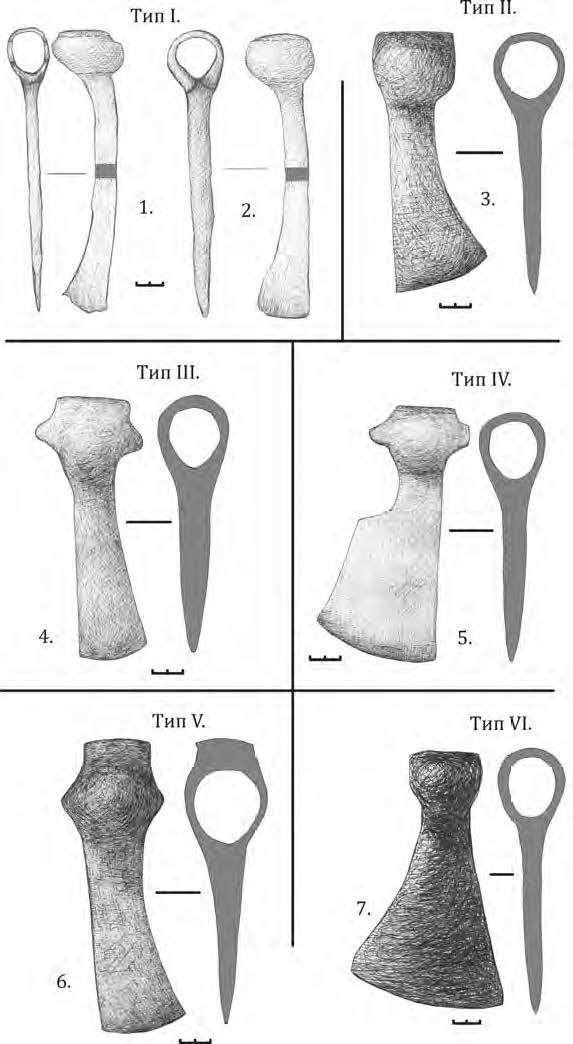WOODWORKING TOOLS FROM THE TERRITORY OF NAROVCHAT FORTIFIED SETTLEMENT AND ITS ENVIRONS
Keywords:
archaeology, Narovchat fortified settlement, town of Mokshy, Golden Horde period, woodworking tools, territorial localizationAbstract
The article examines a large number of archeological artifacts found on the territory of the Narovchat fortified settlement stored within collections of museums and archaeological laboratories now. Narovchat fortified settlement is an archaeological monument of the Golden Horde (the 14th century). Another name for this settlement is the town of Mohshi. It was a major regional center of the Golden Horde. In the 17th century the Russian town of Narovchat was built here. On this territory there were two different settlements. It was the town of Mohshy (the time of its foundation – the 14th century) and Narovchath (the time of its foundation – the 17th century). The cultural layer of the settlement is mixed. Many archeological artifacts have no localization. Some archaeological artifacts can not be dated. The finds of woodworking tools are analyzed in the article. Each artifact was studied and dated. There are many axes in the collections of museums and archaeological laboratories. But all axes do not have localization. There is no evidence that axes connected with the town of Mohshy. Some tools are dated back to the Golden Horde time. This is a fragment of hacksaw, a cooperage tool, etc. These artifacts indicate the existence of woodworking craft with use of some technical methods such as cutting, sawing, planning etc.
References
Алихова А.Е. Отчет об археологических работах Мордовской археологической экспедиции в Наровчате // Архив ИА РАН. – Р-1. № 1910. М., 1959. 19 с.
Алихова А.Е. Отчет о раскопках Наровчатской археологической экспедиции // Архив ИА РАН. Р-1. № 2318. М., 1961. 15 с.
Алихова А.Е. Старосотенский могильник // Археологический сборник. Саранск, 1948. С. 138–230
Археология СССР. Древняя Русь. Город. Замок. Село / Отв. ред. Б.А. Колчин, Т.И. Макарова. М.: Наука, 1985. 429 с.
Белорыбкин Г.Н. Отчет об археологических исследованиях могильника «Татарская Лака II» в
году // Архив ПенГПУ им. В.Г. Белинского. Пенза, 2002. 47 с.
Белорыбкин Г.Н. Золотаревское поселение / Отв. ред. А.Н. Кирпичников. СПб, 2001. 197 с.
Белорыбкин Г.Н. Западное Поволжье в средние века. Пенза, 2003а. – 199 с.
Белорыбкин Г.Н. Новые материалы Золотаревского поселения // Археология Восточноевропейской лесостепи. Пенза, 2003б. С. 410–432.
Завьялов В.И, Розанова Л.С., Терехова Н.Н. Русское кузнечное ремесло в золотоордынский период и эпоху Московского государства. М., 2007.170 с.
Иконников Д.С. Материалы Никольского селища XIII–XIV вв. // Пензенский археологический сборник. Вып. 4 / Отв. ред. Г.Н. Белорыбкин. Пенза, 2012. С. 107–162.
Петербургский И.М., Т.В. Аксенова Т.В., В.В. Гришаков В.В., Первушкин В.И. Стародевиченский могильник // Средневековые памятники Окско-Сурского междуречья / Отв. ред. В.И. Вихляев. Саранск, 1990. С. 64–99.

Downloads
Published
How to Cite
Issue
Section
License
Copyright (c) 2017 D.S. Ikonnikov, M.I. Baisheva

This work is licensed under a Creative Commons Attribution-NonCommercial 4.0 International License.







